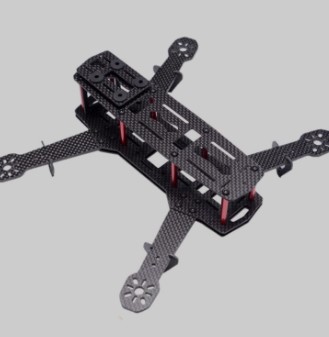Introduction
Drones have become increasingly popular in recent years, with applications ranging from aerial photography to package delivery. As the demand for drones continues to rise, so does the need for lightweight and durable drone frames. This is where carbon fiber comes into play.
Carbon fiber has long been used in high-performance industries such as aerospace and motorsports due to its strength-to-weight ratio. However, with advancements in technology and manufacturing processes, carbon fiber is now becoming more accessible and affordable for the consumer market. This has led to the rise of carbon fiber drone frames which are revolutionizing aerial innovation.
The Advantages of Carbon Fiber Drone Frames
One of the main advantages of carbon fiber drone frames is their strength-to-weight ratio. Carbon fiber is known to be stronger than steel, yet much lighter. This allows for a significant reduction in weight compared to traditional drone frames made of materials such as aluminum or plastic. As a result, carbon fiber drone frames can achieve higher payloads, longer flight times, and increased durability.
In addition to its strength-to-weight ratio, carbon fiber also has high stiffness and rigidity. This means that carbon fiber drone frames are less susceptible to bending or flexing during flight, resulting in improved stability and control.
Another advantage of carbon fiber is its resistance to corrosion. Traditional materials such as aluminum can corrode over time, but carbon fiber is not affected by moisture or chemicals. This makes carbon fiber drone frames more durable and long-lasting.
Increased Innovation and Customization
The use of carbon fiber in drone frames has opened up a whole new realm of possibilities for innovation and customization. Due to its flexibility, buy carbon fiber can be molded into various shapes and sizes, allowing for unique designs that are not possible with traditional materials.
This also means that carbon fiber drone frames can be tailored to specific needs and preferences. For example, a racing drone may require a sleek and aerodynamic frame, while a photography drone may benefit from a more stable and rigid frame.
Improved Performance
The lightweight and durable nature of carbon fiber drone frames directly translate to improved performance. With reduced weight, drones can fly faster, maneuver more easily, and carry heavier payloads. This is particularly beneficial for commercial drones used in applications such as delivery or mapping.
Furthermore, the stiffness and rigidity of carbon fiber frames aid in reducing vibrations during flight, resulting in smoother footage for aerial photography and videography.
Cost-Efficiency
While carbon fiber may have been considered a luxury material in the past, advancements in technology and manufacturing processes have made it more cost-efficient. This means that carbon fiber drone frames are now becoming more accessible for consumers at varying price points.
In addition, the durability and longevity of carbon fiber mean that it can withstand more wear and tear, resulting in lower maintenance and replacement costs in the long run.
Future Possibilities
The use of carbon fiber in drone frames is still a relatively new concept, but the possibilities for future advancements are endless. Researchers are exploring ways to further enhance the properties of carbon fiber, such as increasing its conductivity for better communication and data transfer between the drone and controller.
Another potential development is the integration of sensors and other technology directly into carbon fiber frames, making drones even more lightweight and streamlined.
Conclusion
In conclusion, carbon fiber drone frames are revolutionizing aerial innovation by offering a combination of strength, lightweight design, durability, customization options, and improved performance. As technology continues to advance, we can only imagine the endless possibilities that carbon fiber will bring to the world of drones. With its potential to improve efficiency, reduce costs, and increase capabilities, carbon fiber is undoubtedly the future of drone frames. So if you’re looking to take your drone flying experience to new heights, consider investing in a carbon fiber frame for your next drone build. Happy flying!
